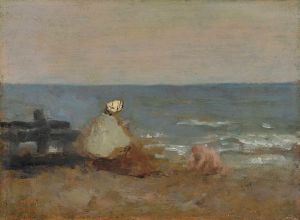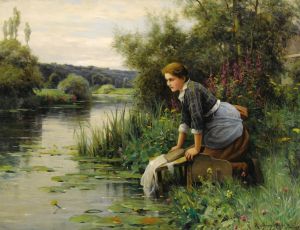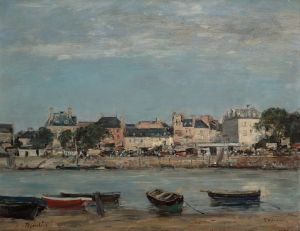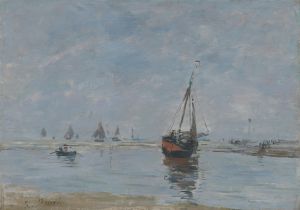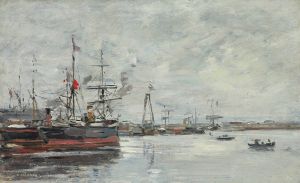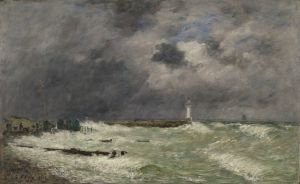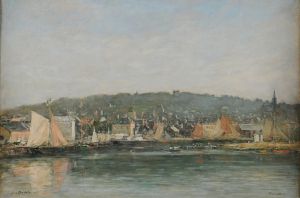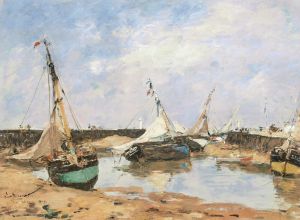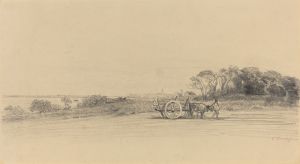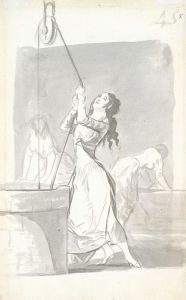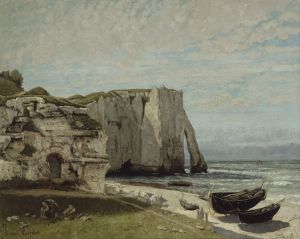
Women Washing Clothes at Étretat
A hand-painted replica of Eugène Boudin’s masterpiece Women Washing Clothes at Étretat, meticulously crafted by professional artists to capture the true essence of the original. Each piece is created with museum-quality canvas and rare mineral pigments, carefully painted by experienced artists with delicate brushstrokes and rich, layered colors to perfectly recreate the texture of the original artwork. Unlike machine-printed reproductions, this hand-painted version brings the painting to life, infused with the artist’s emotions and skill in every stroke. Whether for personal collection or home decoration, it instantly elevates the artistic atmosphere of any space.
Eugène Boudin, a prominent French painter, is widely recognized for his contributions to the development of Impressionism. Born in 1824 in Honfleur, Boudin was one of the first French landscape painters to paint outdoors, or en plein air, which was a significant departure from the traditional studio painting of the time. His works often depict the coastal scenes of Normandy, capturing the changing effects of light and atmosphere.
One of Boudin's notable works is "Women Washing Clothes at Étretat." This painting exemplifies his keen interest in capturing everyday life and the natural environment. Étretat, a small coastal town in Normandy, was a frequent subject in Boudin's oeuvre. The town is renowned for its dramatic cliffs and picturesque beaches, which have inspired numerous artists, including Claude Monet.
In "Women Washing Clothes at Étretat," Boudin portrays a group of women engaged in the mundane yet essential task of washing clothes by the seaside. The painting reflects Boudin's characteristic style, marked by loose brushwork and a focus on the effects of light. The composition is balanced, with the figures of the women positioned in the foreground, drawing the viewer's attention to their activity. The background features the iconic cliffs of Étretat, rendered with soft, muted colors that suggest the atmospheric conditions of the day.
Boudin's ability to capture the nuances of light and shadow is evident in this work. The play of light on the water and the women's clothing adds a dynamic quality to the scene, while the subtle variations in color convey the time of day and weather conditions. This attention to atmospheric effects was a precursor to the Impressionist movement, which sought to depict the transient qualities of light and color.
The painting also offers insight into the social and cultural context of the time. The depiction of women engaged in domestic labor reflects the gender roles and societal expectations of 19th-century France. Boudin's choice to focus on such a scene highlights his interest in portraying the lives of ordinary people, a theme that resonates throughout his body of work.
Boudin's influence on the Impressionist movement is significant. His emphasis on painting en plein air and capturing the fleeting effects of light paved the way for artists like Monet, who regarded Boudin as a mentor. Boudin's works, including "Women Washing Clothes at Étretat," are celebrated for their ability to convey the beauty and simplicity of everyday life, as well as their technical innovation.
Today, Boudin's paintings are held in high esteem and can be found in major art museums around the world. "Women Washing Clothes at Étretat" remains a testament to his skill as a painter and his contribution to the evolution of modern art. Through his work, Boudin continues to inspire appreciation for the natural world and the ordinary moments that define human experience.





